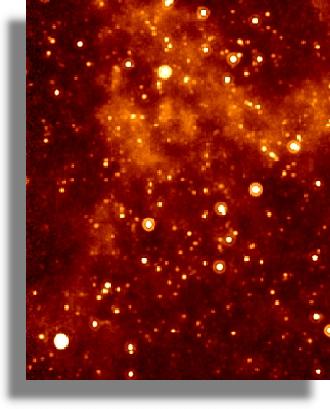
|
What is this site about...
|
 |
|
Why do we need the MIPS?
|
|
|
... and how are we going to do it?
|
|
|
The responsible parties.
|
|
|
Descriptive Papers Documentation
|
|
|
Tell us how great this is.
|
|
|
Extra curricular activities.
|
You are looking at a simulated sky image as will be seen by one of the far-infrared arrays of the MIPS. The Multiband Imaging Photometer for SIRTF (MIPS) is a far-infrared photometer, scheduled for launch into a solar orbit in July, 2002. It is one of three instruments that will fly on SIRTF, the other two being IRAC and IRS
The instrument will be comprised of three detector arrays and attendant optics and calibrators. The arrays are a 128x128 arsenic-doped silicon (Si:As) for imaging at a wavelength of 24 microns, a 32x32 gallium-doped germanium (Ge:Ga) at 70 microns, and a 2x20 stressed Ge:Ga array at 160 microns. The 32x32 array also takes very low-resolution spectra from 50-100 microns.
The Focal Plane Arrays (FPAs) are designed and built at Steward Observatory of the University of Arizona, where the project is also managed. The instrument assembly and construction will be carried out at Ball Aerospace, who will also mount it in the SIRTF cryostat and on the telescope. Lockheed-Martin will build the SIRTF spacecraft and integrate it with the cryostat and telescope. SIRTF is a project of the National Aeronautics and Space Administration (NASA) and is overseen by the Jet Propulsion Laboratory (JPL).
By the way, SIRTF is the Space Infrared Telescope Facility. Don't you love nested acronyms?